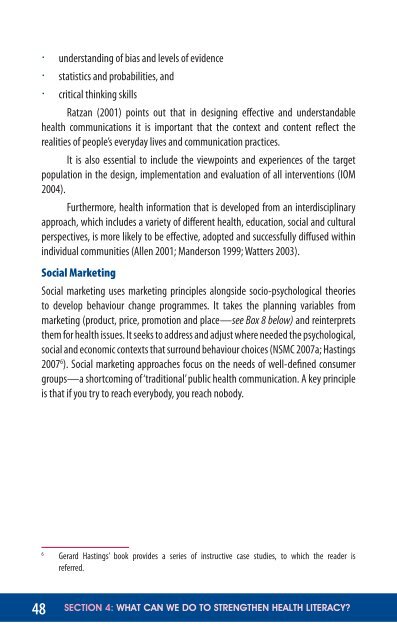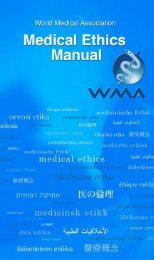the basics - World Health Communication Associates
the basics - World Health Communication Associates
the basics - World Health Communication Associates
- No tags were found...
You also want an ePaper? Increase the reach of your titles
YUMPU automatically turns print PDFs into web optimized ePapers that Google loves.
· understanding of bias and levels of evidence· statistics and probabilities, and· critical thinking skillsRatzan (2001) points out that in designing effective and understandablehealth communications it is important that <strong>the</strong> context and content reflect <strong>the</strong>realities of people’s everyday lives and communication practices.It is also essential to include <strong>the</strong> viewpoints and experiences of <strong>the</strong> targetpopulation in <strong>the</strong> design, implementation and evaluation of all interventions (IOM2004).Fur<strong>the</strong>rmore, health information that is developed from an interdisciplinaryapproach, which includes a variety of different health, education, social and culturalperspectives, is more likely to be effective, adopted and successfully diffused withinindividual communities (Allen 2001; Manderson 1999; Watters 2003).Social MarketingSocial marketing uses marketing principles alongside socio-psychological <strong>the</strong>oriesto develop behaviour change programmes. It takes <strong>the</strong> planning variables frommarketing (product, price, promotion and place—see Box 8 below) and reinterprets<strong>the</strong>m for health issues. It seeks to address and adjust where needed <strong>the</strong> psychological,social and economic contexts that surround behaviour choices (NSMC 2007a; Hastings2007 6 ). Social marketing approaches focus on <strong>the</strong> needs of well-defined consumergroups—a shortcoming of ‘traditional’ public health communication. A key principleis that if you try to reach everybody, you reach nobody.6Gerard Hastings’ book provides a series of instructive case studies, to which <strong>the</strong> reader isreferred.48SECTION 4: WHAT CAN WE DO TO STRENGTHEN HEALTH LITERACY?






